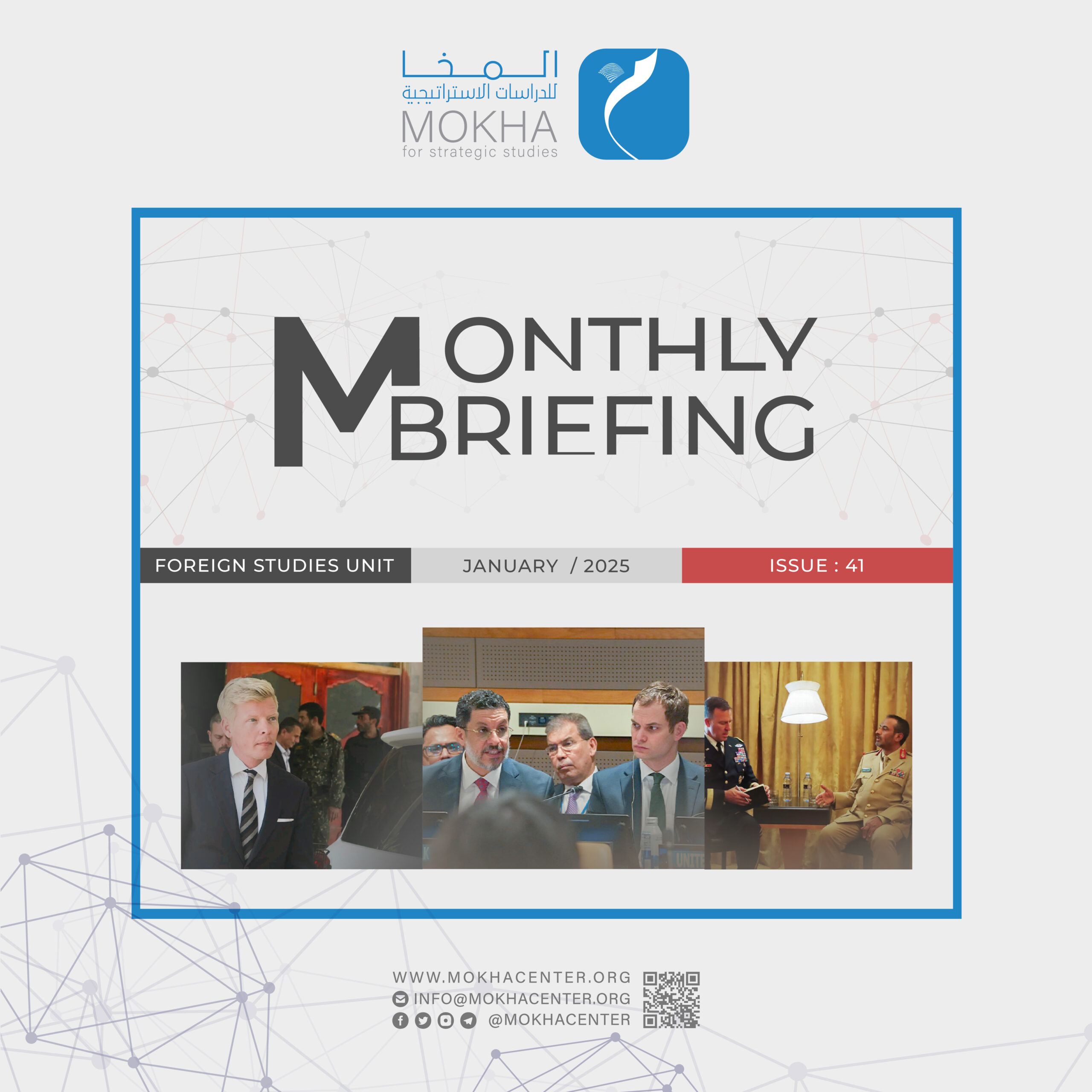Analyzing Yemen’s Coup of September 2014 – January 2015

| Getting your Trinity Audio player ready... |
Professor of International Affairs at Rollins College, Florida, USA.
In the 2020 book, “Global, Regional, and Local Dynamics in the Yemen Crisis,” the first of our three main tasks was to determine responsibility for the coup that ended the transitional government in Sanaa. The second task was to determine responsibility for the start of international warfare, and third was to determine responsibility for prolongation of the war.
It was complicated knowing all who had a hand in the coup. There were many global, regional, and local actors involved in Yemen’s transition, 2011-2014. In addition, the coup developed slowly across four months between September 2014 and January 2015. Both factors made it difficult to know who was responsible for the collapse of Yemen’s transitional government.
Akira Kurosawa’s “Rashomon” film
The role of multiple actors in Yemen’s transition informed the analytical structure of the entire book. Each chapter assessed the political background, interests, motives, and strategies of different key actors in order to explain their behavior at different stages of the evolving crisis. In the introduction, I referred to the postwar Japanese artist Akira Kurosawa who famously used a similar technique to portray criminal behavior in his film “Rashomon.”
Kurosawa’s film consisted of multiple parts, each depicting a version of the same crime scene told from the viewpoint of different characters whom the film director depicted by offering increasing amounts of information about their unique personal backgrounds, interests, motives, etc. Because each character assigned blame for the crime in different ways, the viewer was required to make sense of what happened by interpreting a collection of narratives.
Our 2020 book represented a “Rashomon” approach to understanding Yemen. Each chapter presented the narrative of a different set of key actors: global actors in the chapters of part one; regional actors in chapters of part two; and local actors in chapters of part three. Each chapter was organized around the same chronology of events: the 2011 street protests; the political transition, 2012-2014; the coup d’etat, 2014-2015; the outbreak of international war in late March 2015; and the prolongation of fighting during and after 2016.
The collection of narratives in our book allowed readers a fuller understanding of what happened by explaining how each set of actors behaved at different stages of Yemen’s crisis. As a result, readers were able to consider a full range of interests and motives among all key actors at the time of Yemen’s coup, similar to how viewers of Akira Kurosawa’s film considered the full range of interests and motives of different characters at his fictional crime scene.
Understanding Yemen’s coup, 2014-2015
What did the collection of narratives in our book show about the coup in Sanaa prior to the start of warfare in the spring of 2015? Who bore primary responsibility for overthrowing the government of transitional President Hadi? Answers to these questions are shaped by the second complicating factor to understand what happened in Yemen’s coup: namely, the coup’s slow development between September 2014 and January 2015.
Political dynamics inside and outside the country shifted between September 2014 on the one hand, when military forces loyal to former President Saleh assisted Houthi rebels to encircle, invade, and occupy the capital Sanaa, and January 2015 on the other hand, when transitional President Hadi was forced to resign after being attacked at his presidential residence, later fleeing to Aden and eventually surfacing in Riyadh, Saudi Arabia. For one thing, as Saleh and Houthi forces fought for initial control of Sanaa in the early fall of 2014, UN Special Envoy to Yemen, Jamal Benomar, negotiated a deal requiring reform of the transitional government, thus altering the status quo in Sanaa.
Known as the Peace and National Partnership Agreement (PNPA), it required Hadi to appoint a new technocratic government along with new presidential advisors, some drawn from among Zaydi (Shia) leaders associated with Houthi rebels. The new cabinet was formed by representatives of the two large rival parties, the Islamist (Sunni) party called Islah, and the former ruling party that remained under Saleh’s control, the General People’s Congress (GPC). The primary loser during the coup’s initial phase was retired military commander, Gen. Ali Muhsin al-Ahmar, who was forced to flee the country after spending decades as the primary defender of Islah party interests.
When President Hadi signed the PNPA on September 21, 2014, he gave consent to the outcome of the coup’s initial phase: namely, Gen. al-Ahmar’s exile; weakening of the Islah party; and formation of a new cabinet. The PNPA stipulated the withdrawal from Sanaa of all rebel forces. But Houthi rebel leaders refused to comply. By January 2015, their militia commanders forced Hadi’s resignation, acting in alliance with regular army commanders loyal to Saleh. Thus, Houthi leaders and Saleh bore ultimate responsibility for the collapse of Yemen’s transitional government. But at the outset of the coup, Hadi appeared to endorse what happened when Houthi leaders gained a seat at the political table.
Other relevant actors inside and outside Yemen appeared to support the coup’s initial outcome in September 2014. This created suspicions as the coup proceeded towards its conclusion in January 2015. As a consequence, conspiracy theories surfaced about the underlying cause of events, including possible roles played by actors at global, regional, and local levels. After Hadi resigned in January 2015, Iranian airline flights to Sanaa increased, transporting supplies to Ansarullah, the political arm of Houthi leaders. This led many observers to focus on a conspiracy theory involving Iran as a central actor behind the coup.
The post-coup “consequence” of increased Iranian flights to Sanaa certainly indicated a possible Iranian “cause,” yet it did not prove “cause.” The rush to judgment about the Iranian role reflected a common problem in political analysis, where an observable “consequence” is often mistaken for “cause.” Thus, greater proof was needed before determining whether or not Iran was the primary cause behind the coup, especially because there were many other influential actors involved during the fall and winter of 2014-2015.
Did officials of the Saudi and/or Emirati governments enable the Yemeni coup, as they enabled the 2013 Egyptian coup? Did President Hadi bear responsibility for a coup that undermined his own government? Did the UN envoy bear partial responsibility? Did representatives of the American government support what happened?
Personal views of coup d’etat
In our book, I chose to write the chapter on the American role in Yemen’s crisis because I wanted a better understanding of my own government’s involvement with Yemen. As a US citizen who worked decades as a professor of international affairs, particularly focusing on US foreign policy in the Middle East, I had my own suspicions of what representatives of the US government did in Sanaa as Yemen’s coup unfolded between September 2014 and January 2015.
The US government is infamous as an international actor that sponsors coup d’etat in foreign countries to serve its own national interests. America’s role in such activities is an old problem south of the border in Latin America. As early as the Monroe Doctrine in 1823, government officials in Washington sought to extend US hegemony over the entire Western Hemisphere. During the 1800s and 1900s, the US government often worked to dismantle governments in Central America and the Caribbean islands.
After World War II, during long decades of the Cold War, US sponsorship of coup d’etat expanded beyond Latin America to every region of the world, including the Middle East, Asia, and Africa. As the Cold War came to an end in the late 1980s, the US government adopted the language of “regime change” in states newly defined as “rogue actors.” Such language was used after the 2001 terrorist attacks to justify a more aggressive policy to overthrow governments in Afghanistan, Iraq, and other countries by military invasion.
Most US citizens, like myself, are aware that officials in Washington engage in the wrongful practice of coup d’etat. Many oppose what our government does overseas. In the late 19th century, the most famous critic of US practices on foreign lands was Samuel Clemens, the author better known as Mark Twain. I share the views of Clemens that the US government is better off minding its own business at home, serving public interests within our own borders, not influencing foreign governments abroad. Thus, if my government played a role in Yemen’s coup, my personal inclination is to defend Yemeni national interests.
The American role in Yemen’s post-2011 transition
The US government played an influential role during Yemen’s political transition after the 2011 street protests against Pres. Saleh. Beginning in 2010, it was a founding member of the “Friends of Yemen” group which was led by the British and Saudi governments in response to early signs of political instability in the country.
The precipitating cause of US involvement was a need to combat al-Qaeda’s branch in Yemen, AQAP, which carried out a deadly 2008 attack on the US embassy in Sanaa before assisting two terrorist attacks on US soil in 2009: the first, a shooting incident at a US army base in Texas; and the second, an attempt to detonate a bomb aboard a Dutch flight destined for Michigan. As a result, US interests in Yemen were largely defined by its counterterrorism policy.
Following AQAP’s threats to America in 2008 and 2009, the Obama administration sent a new ambassador to the country, Gerald Feierstein, who had decades of experience with counterterrorism. Arriving in Sanaa in September 2010, his primary task was to ensure the Yemeni government cooperated to reduce threats posed by AQAP. Once street protests erupted early the next year, Feierstein became a leading advocate of the “GCC initiative” to negotiate President Saleh’s resignation from office.
Once Saleh resigned from office, Feierstein supervised a portfolio of military reforms inside the country implemented by the transitional government of President Hadi. Feierstein particularly wanted to see Hadi remove Saleh, members of Saleh’s family, and Gen. Ali Muhsin al-Ahmar from command positions of the armed services. This was a strong indication that government officials in Washington viewed the Yemeni military as a barrier to combating AQAP.
Yemen’s post-2011 military reforms formally succeeded in removing individuals from top command positions, yet there was little genuine change on the ground. Despite Saleh, his family members, and Gen. al-Ahmar officially going into retirement, they effectively retained control of many active combat troops. Amb. Feierstein was particularly frustrated by Pres. Hadi’s inability to force Gen. al-Ahmar to close his military headquarters on the northern edge of the capital city. At the outset of the coup in September 2014, General al-Ahmar still clung to his military headquarters before fleeing the country under threat of armed force. Because the site represented his “last stand” in Sanaa, and because troops at the site served as the last bulwark against rebel forces entering the city from the north, it has been suggested that Amb. Feierstein’s desire to see the strategic army base closed hinted at American involvement in the coup.
As part of research for the book’s chapter on the US role in Yemen, I twice interviewed Feierstein about his post-2011 role with military reforms in the country, in addition to his desire to see Gen. al-Ahmar’s Sanaa headquarters closed. Feierstein told me that he met Gen. al-Ahmar on different occasions and suggested turning his military headquarters into a city park for the enjoyment of Sanaa residents. The US ambassador also suggested the same thing to Pres. Hadi whom he encouraged to ensure the general’s full retirement from military affairs.
At all times during my interviews with the former US ambassador, he portrayed his involvement with Yemen’s transition as an effort to improve democratic civil life in the country. The idea of turning Gen. al-Ahmar’s headquarters into a city park was suggested because the location on high ground overlooking the capital city would bring enjoyment to the wider population. Upon ending his tenure as US ambassador and departing the country in October 2013, Feierstein said he guessed Pres. Hadi could not compel Gen. al-Ahmar to close his headquarters because “Hadi owed the general for past personal assistance.”
The official US view of events preceding the 2014 coup
Because Amb. Feierstein departed Yemen nearly a full year before the start of the coup in September 2014, and because Gen. al-Ahmar never willingly agreed to close his military headquarters, the matter had no impact on what eventually transpired. Following Feierstein’s departure, there was a long delay before the US State Department appointed a replacement. As a result, the Charge d’Affaires, Karen Sasahara, performed the duties of ambassador through the spring of 2014. When I interviewed Sasahara as part of my research, I was particularly interested in knowing what she thought as Houthi rebels approached Sanaa from the north during the winter and spring of 2013 and 2014.
In press interviews at the time, Sasahara was on record criticizing the actions of Houthi rebels. She implored them to disarm and cease fighting in order to participate fully in the country’s peaceful transition. Feierstein’s replacement, Matthew Tueller, arrived at the embassy in late May 2014, weeks before Houthi rebels overran the city of Amran. The fall of Amran’s main army base in early July made possible the coup in Sanaa because, thereafter, nothing prevented rebel forces from encircling the capital city. When Amran fell, Tueller made press statements along the same lines as Sasahara’s earlier statements in the winter and spring.
I interviewed Tueller after interviewing Sasahara in order to understand his view leading to the September 2014 coup. Sasahara previously told me that she and other officials at the US embassy were not focused on threats from the north side of Sanaa posed by Houthi rebels. According to her, the US government was primarily focused on AQAP threats south of Sanaa, particularly near Aden in Abyan province. Tueller affirmed the same point.
Knowing what eventually happened when Houthi rebels took control of Sanaa, dramatically changing the course of events inside the country, it is difficult to comprehend how Tueller and Sasahara failed to foresee the looming threat posed by the Houthi rebel movement. This is particularly true given the centuries-long legacy of Yemen’s northern tribes around the old Zaydi capital Sa’da advancing toward Sanaa to seize power. Houthi leaders originated from Sa’da, as did most of the tribesmen they commanded. None of this was kept secret in Yemen.
After Gerald Feierstein returned to the US State Department in 2013, he remained involved with American policy toward Yemen throughout 2014. I posed the same question to him that I posed to Tueller and Sasahara, asking why the US did not foresee problems as Houthi rebels advanced toward Sanaa. Feierstein responded by acknowledging concerns inside the US government. He said that the US embassy in Sanaa shared these concerns with Pres. Hadi, inquiring directly about Houthi threats to the Yemeni government. According to Feierstein, Hadi always reassured US officials that the Yemeni government was in control, facing no threats from the northern rebel movement.
Conclusion
Based on my research of the US government’s role in Yemen, I found no evidence that US officials bore direct responsibility for Yemen’s coup d’etat. The primary cause of the coup was clearly in the hands of other actors operating inside the country. My next article for the Mokha Center will explain whose hands these were, based on findings of our 2020 book.
The US government’s relationship to Yemen’s coup was primarily shaped by Amb. Feierstein’s work supervising the country’s military reforms during 2012 and 2013. The ambassador sought but failed to persuade Pres. Hadi to end Gen. Ali Muhsin al-Ahmar’s command of troops on the north side of Sanaa. He and other US government officials considered Gen. al-Ahmar a barrier to combating AQAP. Thus, they wanted to see him removed from a military command position. The latter was achieved at the start of the coup when Houthi rebels entered Sanaa.
It was widely known that AQAP and Gen. al-Ahmar’s troops were the main enemies of Houthi rebels. Amb. Feierstein and his successors were well aware of the fact. Because they considered threats from Houthi leaders to be less than threats from AQAP, they showed relatively less attention to the build up of Houthi rebel forces north of the capital. To this extent, one can conclude the US government held interest in the onset of a coup d’etat that accomplished what Amb. Feierstein could not accomplish through his relationship with Pres. Hadi: namely, the removal of Gen. al-Ahmar’s headquarters on Sanaa’s north side.



